The Argus C-44 camera, introduced in 1956, stands as a testament to the ingenuity and technological progress of mid-20th century photography. Produced by the Argus Corporation, an American company renowned for its affordable and reliable cameras, the C-44 was a significant evolution from its predecessors, most notably the popular Argus C3. With its sleek design, enhanced features, and user-friendly interface, the Argus C-44 quickly became a favorite among amateur photographers and hobbyists. It represented a pivotal moment in the democratization of photography, making high-quality imaging accessible to a broader audience. This is definitely a few steps above the democratization that the Brownie camera I reviewed from last week brought!
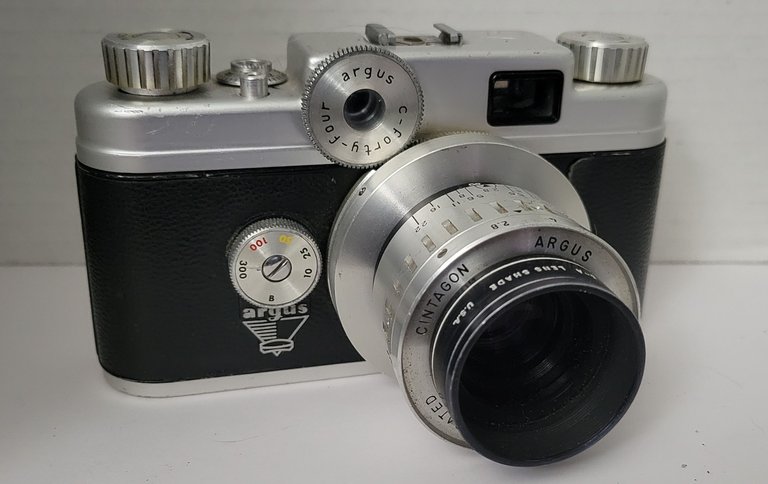
At a time when the market was dominated by more expensive European models, the Argus C-44 offered an attractive alternative without compromising on performance. Its introduction of interchangeable lenses and improved shutter mechanisms set new standards for consumer cameras. Moreover, the C-44 played a crucial role in fostering a culture of photography in post-war America, empowering individuals to capture and preserve their personal and family histories with greater ease and precision. What is was not, however, as an SLR; the viewfinder did not show what the camera would capture through the lens. Still, interchangeable lenses were (and are) an amazing feature!
The Argus C-44 was designed with a meticulous attention to detail, combining functionality with a robust aesthetic appeal. Its body was primarily constructed from metal, lending it a sturdy and durable feel that assured users of its longevity. This solid build quality was a hallmark of Argus cameras, distinguishing them from other brands that often relied on cheaper, less durable materials. The camera's compact size and weight distribution were carefully balanced to enhance portability without sacrificing stability, making it comfortable to hold and use for extended periods.
One of the standout features of the Argus C-44 was its interchangeable lens system, a significant advancement that was not widely available on other camera systems at the time and which allowed photographers to customize their equipment according to their needs. This flexibility was particularly appealing as it provided a range of creative possibilities, from wide-angle landscapes to close-up portraits. The lenses were (mostly) easy to swap, thanks to a bayonet mount system that ensured secure attachment and alignment. This innovation not only enhanced the camera's versatility but also positioned it as a serious contender in the market, rivaling more expensive professional models.
In terms of technical specifications, the Argus C-44 offered a range of shutter speeds and aperture settings that allowed for precise control over exposure and depth of field. The shutter system was capable of speeds from 1/10 to 1/300 of a second, accommodating various lighting conditions and motion capture needs. The aperture settings, ranging from f/2.8 to f/22, provided ample flexibility for achieving desired sharpness and background blur. Additionally, the camera featured a combined viewfinder and rangefinder system, simplifying the process of composing and focusing shots. The film loading mechanism was designed for efficiency, compatible with standard 35mm film rolls, and featuring a straightforward advance and rewind system that minimized the risk of film jams or misalignment.
Despite not being an SLR, the Argus C-44 did enhanced focusing mechanisms that set it apart from previous models and many of its contemporaries. The camera incorporated a coupled rangefinder system which allowed photographers to focus and compose their shots through a single viewfinder.
Another significant technological advancement in the C-44 was its improved shutter system. The camera boasted a synchronized leaf shutter, offering a range of speeds from 1/10 to 1/300 of a second. This versatility allowed photographers to effectively manage exposure in various lighting conditions and capture fast-moving subjects with minimal motion blur. The synchronization with flash units was another critical feature, enabling well-exposed images even in low-light environments. These improvements in the shutter mechanism, combined with the camera's robust construction and advanced lens options, solidified the Argus C-44's reputation as a highly capable and innovative camera of its time.
Using the Argus C-44
The Argus C-44 is a fun camera to use. It's weighty but feels good in the hands. The shutter release is in a good spot and requires intent to use so as to not be accidentally depressed. Forwarding the film is a little odd, however, as it requires turning the knob as opposed to pulling a lever; this was a feature and format common to cameras of the time, particularly those that used medium format film such as 120 or 620 format, so not entirely unexpected, but still feels a little odd for 135 (35mm) format film.
Focusing and adjusting the aperture and shutter speed does take some getting used to: Argus cameras are not nicknamed "bricks" for no reason. They are solid cameras with solidly built functions, but all the instruments are on the front of the camera, leaving one to scramble when needing to adjust on the fly. Patience wins the day with this camera!
Results
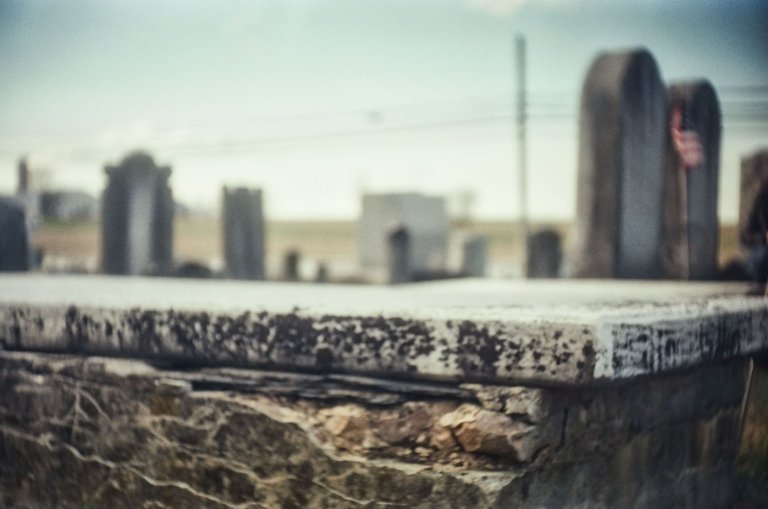
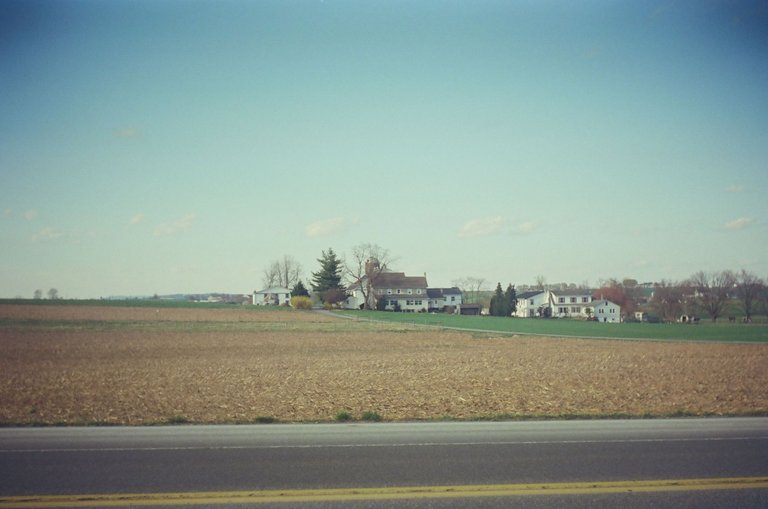


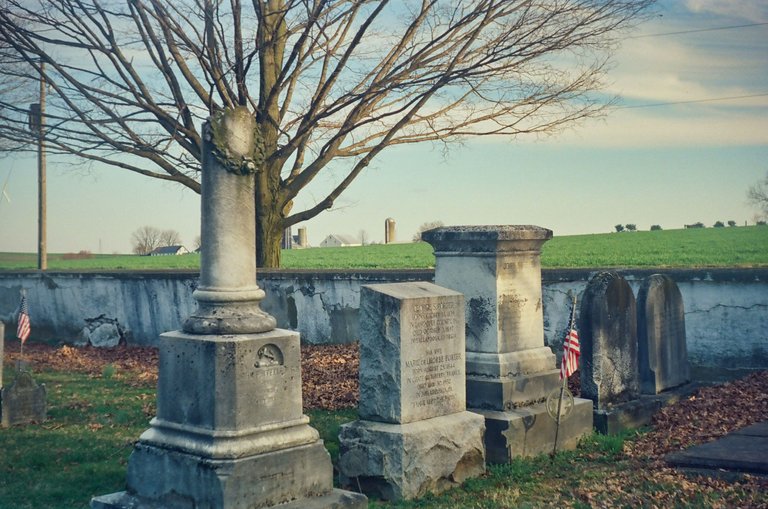
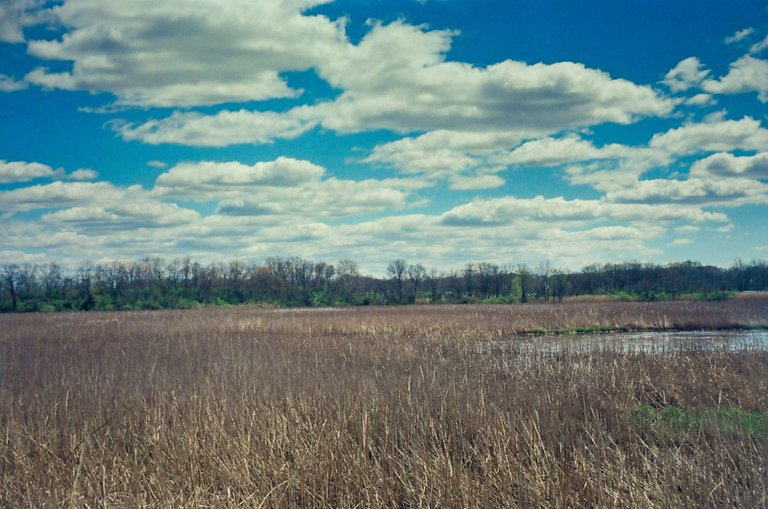

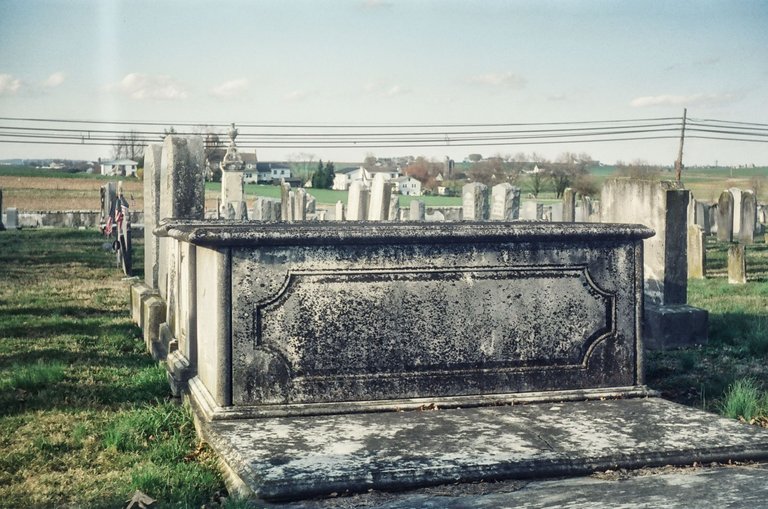
My other film cameras:
- Kodak Duaflex II
- Kodak Tourist
- Agfa B2 Cadet
- Agfa Pioneer
- Brownie Special Six-16
- Kodak Flashmite 20
- Exakta VX
- Graflex 22
- Kodak Retina II
- Canon FT QL
- Zenith Comet
- Kodak No. 1 Autographic
- Hawkeye 2 Model C
(c) All images and photographs, unless otherwise specified, are created and owned by me.
(c) Victor Wiebe
Blind Skeleton
Online Radio! 24x7 of OTR classics:
Live shows:
- Three Tune Tuesday Live Stream: 12:00pm (noon) EST
- Electric Dreams Live Stream: 2nd and 4th Wednesdays, 8:30pm EST
The Skeleton Brew coffee shop is open!
